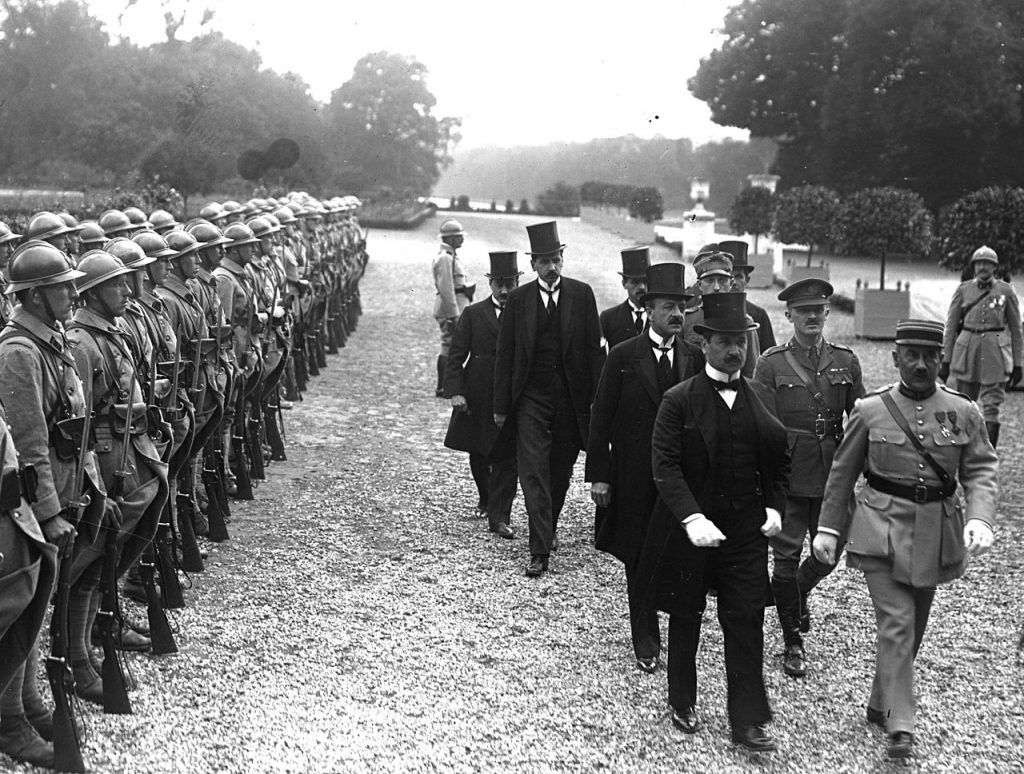Péter Harrach, faction leader of the smaller Hungarian Christian-Democratic coalition party laid a wreath at the disputed Úz valley military graveyard in Transylvania on June 4, the Day of National Unity, when Hungary remembers the loss of a sizeable part of its territory to its neighbours after WWI.
On June 4, 1920 the delegation of the Kingdom of Hungary signed the peace treaty that took away 72 percent of its territory and 64 percent of its population.

The Hungarian delegation arrives at the signing of the Trianon Treaty at Versailles, near Paris on June 4, 1920. (Wikimedia Commons)
In April the council of Dărmănești (Dormánfalva in Hungarian) – a small town with 8,600 inhabitants in Bacău (Bákó in Hungarian) county – set up Romanian war-era graves and a monument in a Hungarian military cemetery in the Úz Valley, on the territory of the neighbouring County Hargita/Harghita.
The news provoked outrage among Hungarians because the cemetery was established by Austrians and Hungarians in 1917, and not a single Romanian soldier is buried there. The remains of 650 Hungarian, Austrian and German soldiers rest in the cemetery, which belongs officially to Csíkszentmárton is a small Székely village with 1,200 inhabitants (98 percent of them Hungarians).
Despite promises by Romanian government officials that the issue will be solved quickly and peacefully, it has aggravated to the point that local police harassed ethnic Hungarian politicians. As a result RMDSZ, the main political party of ethnic Hungarians in Transylvania has withdrawn its crucial support of the ruling Social Democrat-Liberal (ALDE) coalition.
“This military graveyard was subjected to an offense that must be solved and I think it must be solved through diplomatic means”, Harrach said at the commemoration. His family hails from Transylvania.
Title image: Christian-Democrat faction leader Péter Harrach lays a wreath at the disputed Úz valley WWI military graveyard in Transylvania (MTI/László Járai)